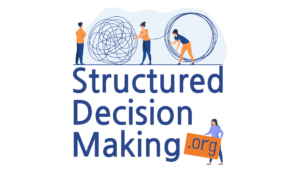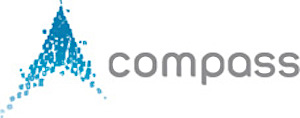Running a Scoping Session
A scoping session could be anything from a couple of hours to a couple of days depending on the decision problem.
Prepare for the session
- Spend some time preparing for the session:
- Confirm the list of participants to make sure all the relevant people will be involved
- Decide who should facilitate: for internal scoping sessions, you may be able to do it yourself but for very controversial or complex decisions you may want someone more neutral
- Interview key people in advance, in particular the project initiator and any key people who won’t be able to attend.
Hold the session
You are essentially going to walk the group through a “rough cut” of Steps 1 to 3 with the goal of gaining a common understanding of the decision at hand, and preparing a decision charter to guide the process. Although it will vary with the situation, you will want to cover most of the following topics at the session:
- Introduce SDM: Provide a short summary of the process and share some examples of how it has been applied so that people know what to expect.
- Clarify the decision context: What exactly is the decision that will be made? Who will make it: What are the key drivers of the decision process? How is it related to other decisions? What are the constraints on the process? Are they really constraints? Should the “constraints” be tested?
- Identify objectives: Brainstorm the issues or concerns people want to see addressed and help the group to turn a loose set of issues into a more concise set of objectives.
- Identify the range of possible alternatives: Not the details, but broadly, what is the range of things under consideration? What’s in and what’s out? Be practical, but also be careful not to be too limiting.
- Identify information needs: Sketch out a consequence table with the objectives and alternatives you’ve identified. You can leave it blank or fill it with plusses and minuses or check marks and Xs. How will you get the information you need to fill in the table. What data or modeling do you have? What data or analytical capability do you need to gather or develop? Where could you rely on expert judgment?
- Identify key trade-offs and uncertainties: What are likely to be the key trade-offs or controversial issues? Where are the key uncertainties? Which ones seem most likely to affect the decision at hand? How could you address the data gaps?
- Discuss roles and responsibilities: Who should do what? What is the role of experts and stakeholder consultation? What resources do you need internally ( people, timelines, money)? What are the next steps?
Document the session
The outcomes of the scoping session can be documented in the form of a decision charter, or project plan that summarizes the approach to planning and consultation that will be taken for the decision, and that ensures that resources are allocated to the issues according to the extent to which they are expected to influence the decision.
Key Ideas
- Prepare for a scoping session by pre-arranging the roles of all key people in advance
- The purpose of the scoping session is to clarify the decision and prepare a decision charter


